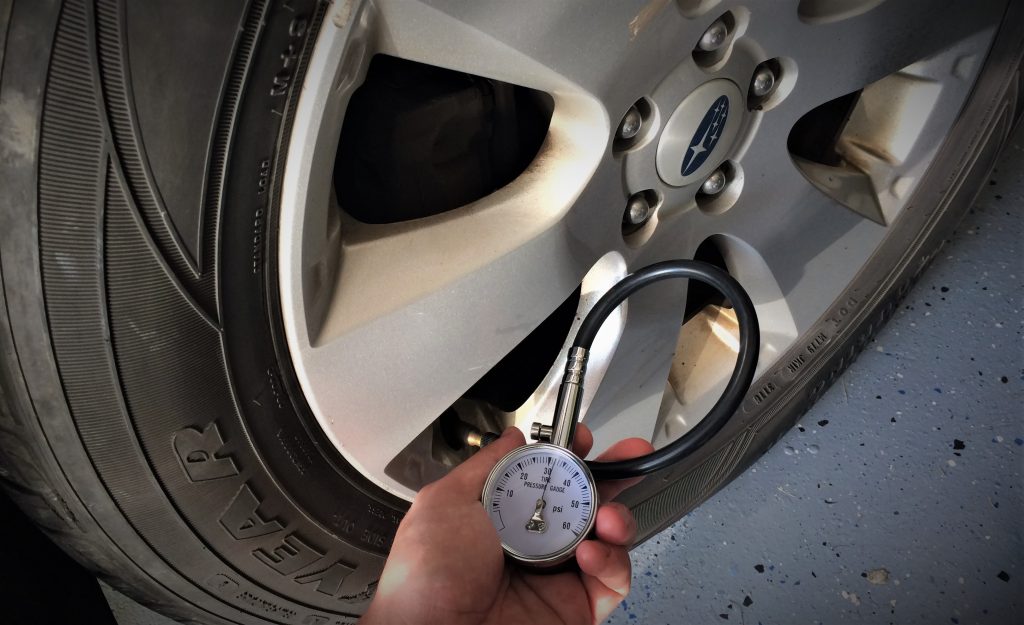Whether you drive a custom hot rod or a late model family sedan, it’s nearly impossible to over-estimate the importance of having the correct air pressure in your tires. Proper tire pressure will help your tires wear longer, enhance fuel economy, improve vehicle handling, and make your car or truck safer.
Yet, many people overlook the importance of checking tire pressure routinely and properly.
This is particularly important when we are transitioning between seasons–from warm to cold or vice versa. That’s because temperature changes affect tire pressure and can adversely change the performance, gas mileage, and safety of your ride. In cool weather, a tire can typically lose one or two pounds of air per month. In warm weather, it can lose air pressure even more quickly.

Here are a few quick tips for properly maintaining tire pressure:
- Again, seasonal or altitude changes can necessitate a trip to the ol’ compressor. As a rule of thumb, for every 10-degree change in temperature, tire pressure changes 1 psi.
- Be alert for unnatural pulling or vibration, as well as ticking sounds at low speeds. This is often an indicator of a nail, screw, or other small object in the tire.
- A bulging sidewall or excessively hot tire often foretells of a slow leak. Inspect your tire immediately and use your spare tire, if needed.
- Invest in your own quality tire pressure gauge. Gas station air meters can be terribly inaccurate.
- If possible, make sure the tires are “cold” when checking the tire pressure. Most manufacturers denote recommended “cold pressure,” which is the tire pressure when the vehicle has not been driven more than one mile.
- Make sure that all valves and extensions are equipped with valve caps to keep out dirt and moisture.
- Associate checking tire pressure with filling your gas tank. Check air pressure in your tires every other time you fill up your gas tank to get into a habit.
- Always check pressure when the tires are rotated, keeping in mind that many vehicles require different tire pressures on the front and rear axles. Depending on the rotation of the tires, you may need to make adjustments to meet these requirements.
- Be sure to check pressure in your spare tire, too. This type of tire often requires a higher air-pressure level than other tires.
- If you drive a newer vehicle, correct air pressures may be found in the vehicle’s owner’s manual or on the tire placard (usually found on the vehicle door edge or doorpost).
By following these tips, you’ll experience better gas mileage, performance, and overall driving experience. And who can’t get behind that?

[…] center, the tire wears more quickly in the middle than on the sides. Pay close attention to your tire pressure and make sure tires are inflated to the manufacturer’s […]
[…] center, the tire wears more quickly in the middle than on the sides. Pay close attention to your tire pressure and make sure tires are inflated to the manufacturer’s […]